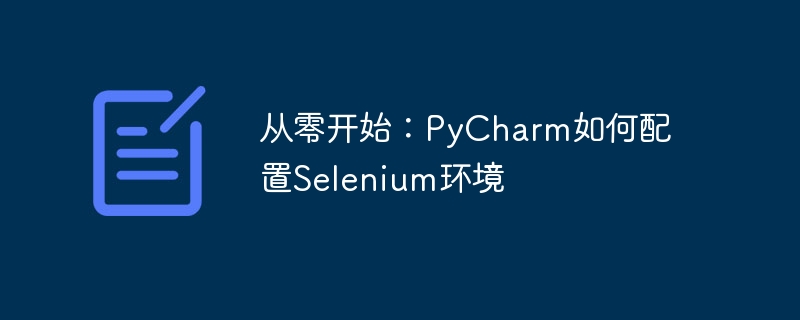

Start from scratch: How to configure Selenium environment with PyCharm, specific code examples are required
Introduction
Selenium is an automated testing tool that is widely used on the Web Testing and automation control of applications. When using Selenium for Python development, PyCharm is a powerful integrated development environment that can provide convenient development tools and environment configuration. This article will introduce how to configure a Selenium environment in PyCharm from scratch and provide specific code examples.
Step 1: Install PyCharm
First, we need to download and install PyCharm. You can choose the version that suits you to download and install on the official website (https://www.jetbrains.com/pycharm/).
Step 2: Install Python
Before configuring the Selenium environment, we need to install Python first. PyCharm integrates the Python interpreter by default, so Python can be installed directly in PyCharm.
Step 3: Install Selenium
Step 4: Configure the browser driver
Selenium requires a browser driver to control the browser for automated operations. Different browsers require different drivers. This article uses the Chrome browser as an example.
Step 5: Write a code example
The following is a simple example to introduce how to use Selenium to perform automated testing in PyCharm.
from selenium import webdriver
# 创建浏览器驱动
driver = webdriver.Chrome()
# 打开百度首页
driver.get("https://www.baidu.com")
# 定位搜索框
search_box = driver.find_element_by_id("kw")
# 在搜索框中输入关键词
search_box.send_keys("Hello, Selenium!")
# 提交搜索表单
search_box.submit()
# 关闭浏览器
driver.quit()Summary
Through the above steps, we can successfully configure the Selenium environment in PyCharm and write automated test code using Python. In actual development, we can use different browser drivers and Selenium APIs to perform more complex operations as needed. I hope this article can help you and enable you to quickly get started using Selenium for automated testing.
The above is the detailed content of Configuring a Selenium environment with PyCharm: a tutorial from scratch. For more information, please follow other related articles on the PHP Chinese website!




